NIL
Arkansas NIL collective calls on prominent lawyer to enforce Madden Iamaleava buyout clause amid transfer
FAYETTEVILLE, Ark. — Arkansas’ name, image and likeness collective has hired an attorney to pursue and enforce a buyout clause in former quarterback Madden Iamaleava’s agreement, CBS Sports has learned. In an unprecedented move in the NIL era of college sports, the parent company overseeing the Arkansas Edge collective has hired noted sports attorney Tom […]
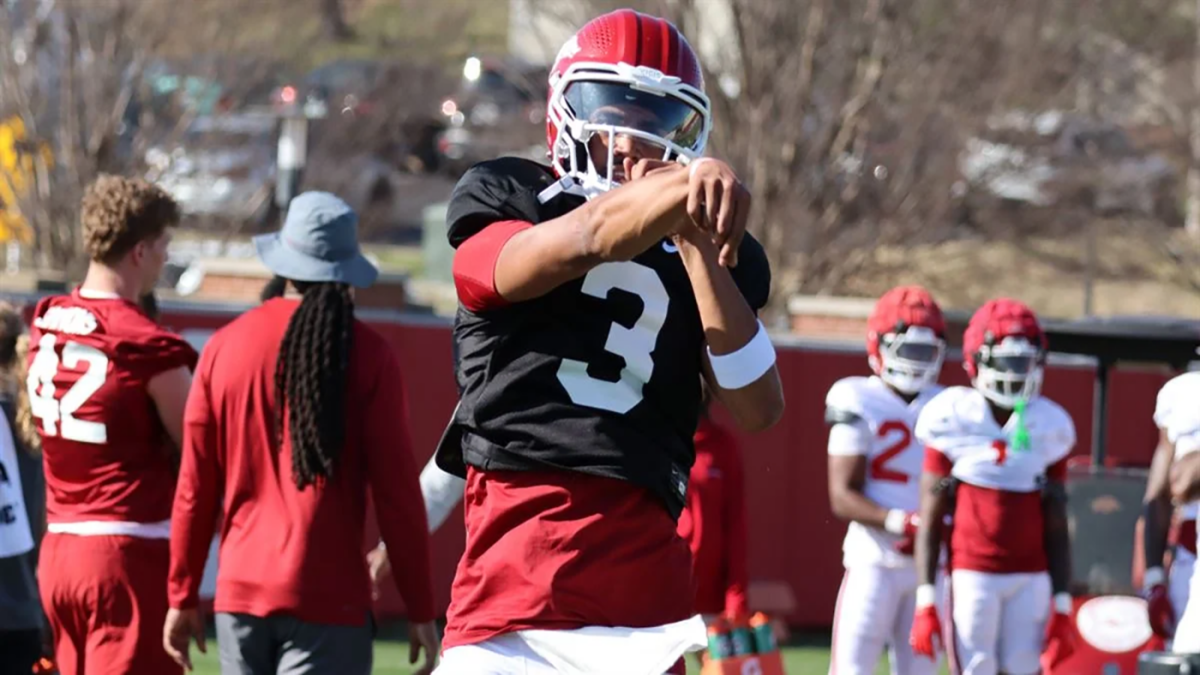
FAYETTEVILLE, Ark. — Arkansas’ name, image and likeness collective has hired an attorney to pursue and enforce a buyout clause in former quarterback Madden Iamaleava’s agreement, CBS Sports has learned.
In an unprecedented move in the NIL era of college sports, the parent company overseeing the Arkansas Edge collective has hired noted sports attorney Tom Mars to enforce buyout provisions in NIL contracts at Arkansas, Blueprint Sports CEO Rob Sine confirmed Saturday to CBS Sports. The collective is following the orders of Arkansas athletics director Hunter Yurachek, who directed the collective to pursue buyout money in contracts broken by players in an insistent statement released Tuesday, just two hours after Iamaleava entered the transfer portal.
The two former Arkansas players targeted in the initial legal efforts are Iamaleava and former receiver Dazmin James, sources told CBS Sports. A meeting between Iamaleava’s representatives and Blueprint Sports’ legal team is expected early this week.
Iamaleava signed a one-year contract with Arkansas worth roughly $500,000 in January, according to people familiar with the deal. The contract included a provision requiring Iamaleava to pay the collective 50% of the money remaining on the agreement should he leave the school. He was due $400,000 in remaining payments, which amounts to a buyout of $200,000, a source told CBS Sports.
James didn’t record a catch at Arkansas until a breakout performance in the Liberty Bowl, where he caught three passes for 137 yards and a touchdown — a 94-yard reception and school record — in the Hogs’ 39-26 victory against Texas Tech. James entered the portal four days later and transferred to Cal in January.
Mars, who is based in Arkansas, has been at the center of several notable NCAA legal affairs over the last decade. He recently represented Tennessee’s NIL collective in its fight against the NCAA, when it investigated potential NIL violations tied to Nico Iamaleava in early 2024.
It’s not uncommon for players to enroll in schools in January only to enter the transfer portal before ever playing in a game. However, for the first time, schools have taken an interest in enforcing new buyout clauses in NIL contracts. Now, legal battles between collectives and former players may become part of the ever-changing world of college athletics as it continues to shift toward a professional model.
Hundreds of players — and their former schools — have ignored buyout language in NIL contracts as all parties await revenue sharing tied to the House v. NCAA settlement — to take effect on July 1. The question of whether these NIL contracts are legal has sparked debate in legal circles, contributing to schools’ hesitancy to sue players.
On the heels of the saga involving Nico and Madden Iamaleava, multiple schools have become more inclined and are re-evaluating legal action against former players who do not honor their contracts, sources told CBS Sports.
The saga of the Brothers Iamaleava has muddied the canvas. Earlier this month, Nico became the first high-profile player to hold out of team activities amid a contract dispute. Hours later, Tennessee moved on from its starting quarterback who led the Vols to the College Football Playoff.
Arkansas puts departed QB Madden Iamaleava in its crosshairs by encouraging NIL collective to recoup buyout
Brandon Marcello
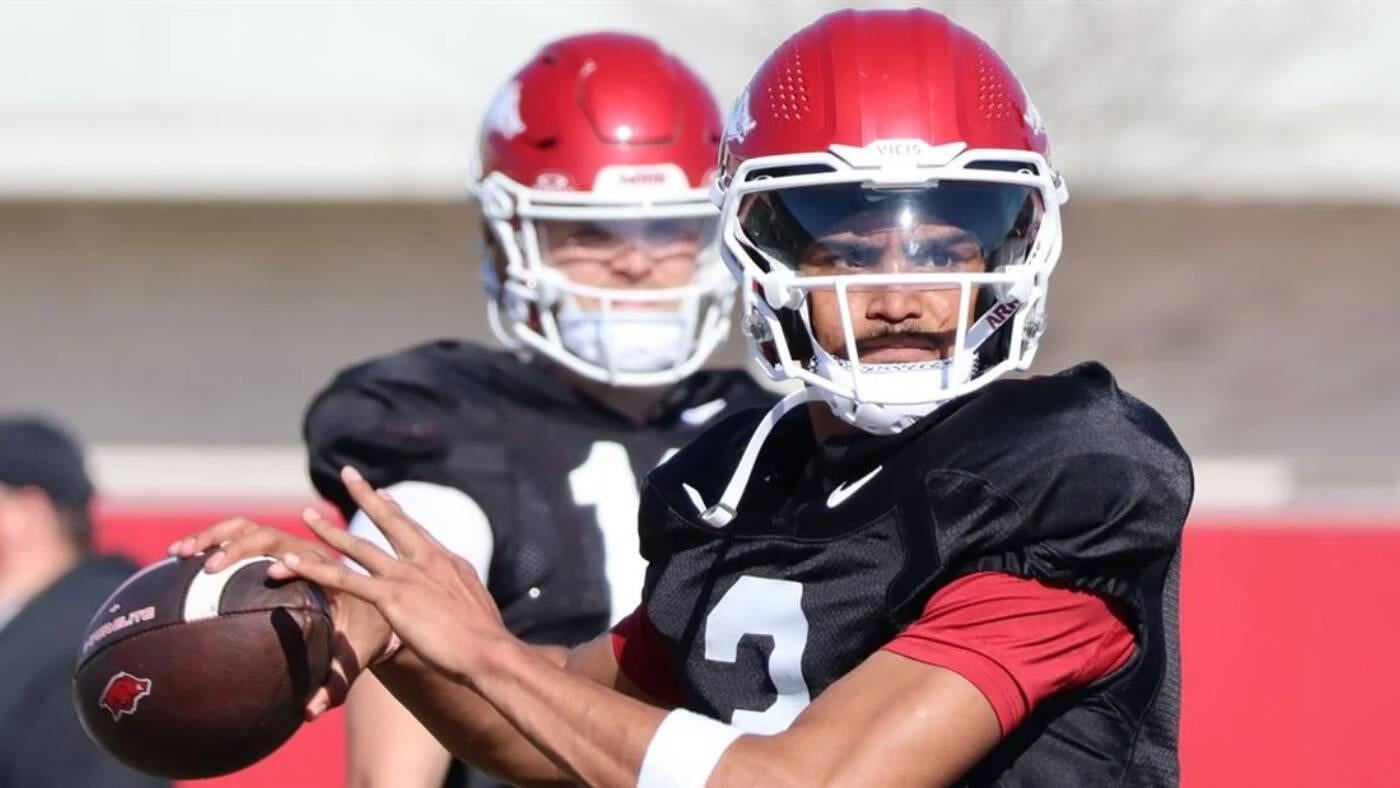
One day after Nico signed with UCLA on Easter Sunday, Madden informed the Arkansas coaches that he was homesick and wanted to enter the transfer portal, a person familiar with the decision told CBS Sports. The Iamaleava family, including Nico, visited Madden in Fayetteville to watch the Razorbacks’ spring game, which was canceled due to severe weather, 48 hours before Madden alerted coaches he was leaving the program.
“The portal, and I know Nico was high-profile, but I don’t want to blame the players, I don’t, for leaving,” Arkansas coach Sam Pittman told reporters Thursday. “I mean, you could say, ‘Well, he was here three months and blah, blah, blah,’ but the opportunity to leave is there twice a year. The (opportunity) to leave for more money is there twice a year. I’m not positive what we all would do in that situation.”
Madden’s recruiting story might not be as dramatic as his older brother’s NIL negotiations and subsequent departure from Tennessee, but it did spark national interest as he left Arkansas — intending to follow his sibling to UCLA — before ever playing for the Razorbacks.
Madden initially committed to UCLA in May 2024 but flipped to Arkansas in a surprise announcement on National Signing Day in December. NIL contracts at Arkansas commonly include language requiring players to reimburse 50% of the remaining money on their deal if they leave for another school, according to documents reviewed by CBS Sports. Madden Iamaleava had roughly eight months remaining on his contract.
Arkansas snagged the industry’s attention Tuesday when Yurachek became the first athletics director to direct an NIL collective to enforce buyout clauses in players’ contracts.
“I have spoken with the leadership team at Arkansas Edge and expressed my support in their pursuit to enforce their rights under any agreement violated by our student-athletes moving forward,” Yurachek said in the statement. “We appreciate Edge’s investment in our student-athletes and acknowledge the enforcement of these agreements is vital in our new world of college athletics.
“We look forward to continued dialogue with all parties resolving these matters.”
One NIL contract dispute will not bankrupt a multi-million-dollar NIL collective, but multiple players departing without paying buyouts could erode the school’s negotiating power with future players. Arkansas leads the SEC with 34 players transferring out of the program since December.
Meanwhile, tampering continues to be a problem across college football. Players not in the portal are contacted daily to gauge their interest.
The state of Arkansas’ NIL laws have been relatively aggressive in recent years as the state tries to help its flagship university evolve with the landscape. In a 2023 amendment, the Arkansas Publicity Rights Act gave the University of Arkansas the power to attack tampering and sue agents, coaches and other third parties who “give or promise compensation” for the use of a player’s NIL if that player has already signed an enrollment contract at a university in Arkansas.
On Friday, the state signed into law a bill exempting players’ NIL contracts from state taxes.
NIL
Otega Oweh’s NBA draft decision shows good of NIL
Instead of NCAA basketball coaches lamenting the ills of name, image and likeness deals, they owe it a thank-you. That’s not to say NIL saved college basketball, but it sure has helped make the game better just when it seemed it was too young and immature. The game has grown up. The 2025 Final Four […]

Instead of NCAA basketball coaches lamenting the ills of name, image and likeness deals, they owe it a thank-you. That’s not to say NIL saved college basketball, but it sure has helped make the game better just when it seemed it was too young and immature.
The game has grown up.
The 2025 Final Four boasted three teams with average ages of greater than 21 for their starters. Duke, with an average age of 19.4, was the youngest thanks in part to Cooper Flagg, who reclassified and enrolled in school as a 17-year-old, being one of three freshman starters.
Flagg’s the projected No. 1 overall pick in June’s NBA draft, and players like him will always be one-and-done under the current format. But NIL has given college basketball a greater chance at keeping the players who are borderline-ready to turn pro.
Of course, the NCAA didn’t have the vision to make it better by changing its policy to allow for NIL. The shift was essentially forced upon the organization after the Supreme Court unanimously concluded in NCAA v. Alston that its restriction on education-related benefits violated antitrust laws, which paved the way for athlete compensation.
Had NCAA leadership been progressive enough to understand that change was coming, perhaps they could have planned for the safeguards to keep NIL from being the pay-for-play model it morphed into becoming.
The House v. NCAA settlement, once finalized, could rein NIL deals back into truly being about endorsements with a proposed third-party clearinghouse monitoring every deal over $600.
Even if by happenstance, NIL has served a purpose.
Kentucky’s Otega Oweh used just about every minute of his time up to the NBA draft withdrawal deadline to decide whether he’d return to school. Without NIL offers, he would not have had a decision to make. He would have declared and stayed in the draft.
Instead, Oweh just likely made the Wildcats a preseason top-10 team by announcing his return.
Keeping good, experienced players in college has been good for the game. The best teams, since NIL became legal in July 2021, are no longer determined by the number of five-star freshmen on the roster.
The “get old, stay old” mantra that informs many coaches’ rosters became much easier to accomplish.
Think of all the players who stuck around in college instead of leaving early to pursue a professional career thanks to NIL deals.
Kentucky’s Oscar Tshiebwe was in the original class of beneficiaries.
He won several National Player of the Year awards in 2022, his first season with the Wildcats after transferring from West Virginia. In the old way of doing things, that would have been enough of a momentum boost to thrust him into declaring for the NBA draft and going about forging his pro career.
Tshiebwe returned for another season. And even with the NIL hurdles he faced (as an international student in the U.S. on a student visa he was restricted in what deals he could make), he earned enough that justified his decision to stay at UK.
Over the past four seasons as deals have gotten bigger, players have been easily persuaded to stay in school. Take a look at the players who withdrew their names from the NBA draft before Wednesday’s 11:59 p.m. deadline.
Last season, UAB’s Yaxel Lendeborg joined Larry Bird as the only other player in Division I history to post 600-plus points, 400-plus rebounds and 150-plus assists in a season. He was a sure first-round pick, but he’ll play for Michigan next season.
Florida’s Alex Condon was one of those players stuck between a late first-round and early second-round projection. He opted to return to Gainesville, where the Gators have built a roster that could defend their national championship.
Other players including former Indiana forward Mackenzie Mgbako, who transferred to Texas A&M, and Houston point guard Milos Uzan returned to school to improve their NBA stock rather than gamble on being a second-round pick in the draft.
Most of those players, pre-NIL, would have leaned toward staying in the draft and starting their pro careers, even if that meant leaving a good situation in college to play in the G League or head overseas.
Now those players, in many cases, will earn more money through NIL playing another year in college than they would have made in their first pro contract.
That’s a net positive for college basketball.
Thanks, NIL.
Reach sports columnist C.L. Brown at clbrown1@gannett.com, follow him on X at @CLBrownHoops and subscribe to his newsletter at profile.courier-journal.com/newsletters/cl-browns-latest to make sure you never miss one of his columns.
NIL
Brown Named NFCA First Team All-American
Story Links Sun Devil Softball All-Americans TEMPE – Sun Devil Softball pitcher Kenzie Brown was named to the 2025 NFCA Division I All-America First Team the Association announced on Wednesday afternoon during its annual press conference at the Women’s College World Series (WCWS). […]
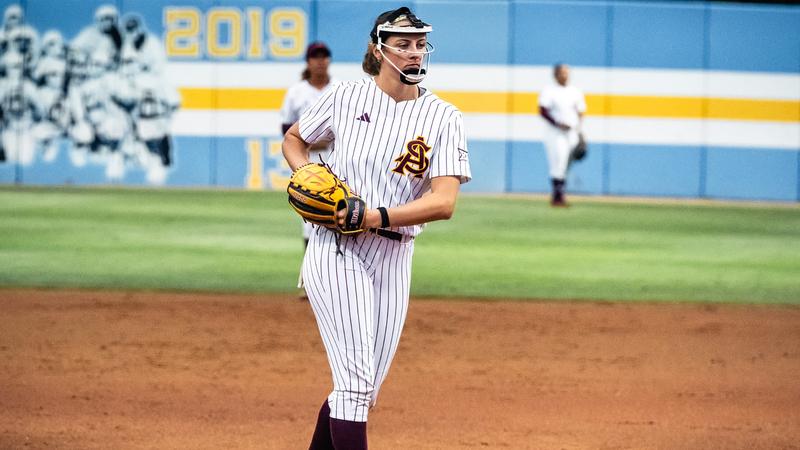
TEMPE – Sun Devil Softball pitcher Kenzie Brown was named to the 2025 NFCA Division I All-America First Team the Association announced on Wednesday afternoon during its annual press conference at the Women’s College World Series (WCWS). She is one of fifty-four student-athletes from 33 different institutions to be voted to one of three 2025 NFCA Division I All-America teams.
Brown’s first All-America selection marks the 45th time a Sun Devil has been recognized and its the 26th first team honor. She is the first ASU pitcher named All-American since 2018 (G Juarez) and the first to make the first team since 2022 (Cydney Sanders).
Through play in the Super Regionals, Brown ranks second in the country with 289 strikeouts and by averaging 11.6 strikeouts per seven innings. She leads all Power 4 pitchers in both categories. Her strikeout total ranks 10th for a season in program history with the per seven average a new program record.
Brown ended the season at 19-8 with four saves and a 1.28 ERA. She recorded double-digit strikeouts in a game 12 times and had 12-plus on nine occasions. Brown tied the ASU record for strikeouts in a seven-inning game when she recorded 18 in a 1-0 win over BYU in the program’s first-ever Big 12 game on March 6.
In addition to being named to the NFCA All-America First Team, Brown was named Second Team All-America by D1 Softball and Softball America.
NIL
Ex-Nevada star Cortez Braham Jr. sues NCAA for seventh college season, claiming $500K loss
Cortez Braham Jr., who spent last season on the Nevada football team, is suing the NCAA for a seventh year of college eligibility. A 6-foot-2, 201-pound wide receiver, Braham was among a wave of former junior-college players who starred for the Wolf Pack last season and were seemingly out of eligibility but entered the transfer […]
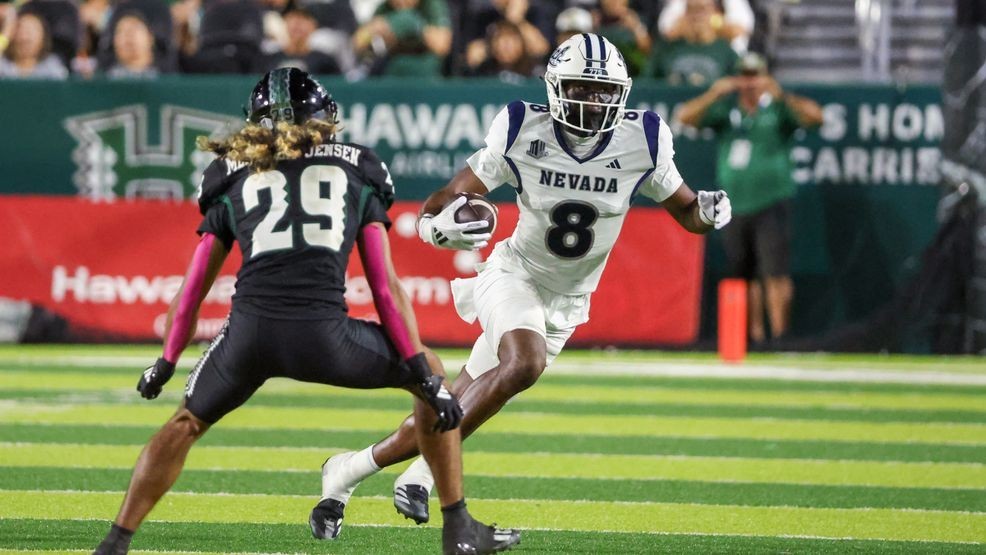
Cortez Braham Jr., who spent last season on the Nevada football team, is suing the NCAA for a seventh year of college eligibility.
A 6-foot-2, 201-pound wide receiver, Braham was among a wave of former junior-college players who starred for the Wolf Pack last season and were seemingly out of eligibility but entered the transfer portal this offseason. But Braham has not committed to a new school as he seeks an additional year of eligibility, which he claims could net him up to $500,000 in name, image and likeness money.
The NCAA has faced a number of lawsuits from athletes with antitrust claims who argue they should not be limited by the NCAA’s eligibility clock, which includes four years of active playing time over a five-season period. The NCAA’s rules have held seasons played at the junior-college level count against four years of NCAA eligibility, although Vanderbilt quarterback Diego Pavia, who at one time was committed to Nevada, received an injunction last December after he argued his JuCo years should not count against his NCAA clock. The NCAA has appealed the court ruling favoring Pavia but granted junior-college athletes a temporary additional year of eligibility in 2025-26.
Many Nevada Wolf Pack athletes have or plan to take advantage of that ruling, which apparently does not apply to Braham because his five-year clock has expired. Braham spent three seasons at Hutchinson (Kan.) Community College from 2019-21 and two at West Virginia from 2022-23 before arriving at Nevada last season. Braham redshirted at West Virginia in 2023 after playing in three games and 2020 did not count against eligibility due to COVID-19’s impact, the latter making him eligible for the Wolf Pack last season as his NCAA clock was extended to six years. Braham also was committed to Buffalo at one point but did not play for the Bulls.
Braham played three seasons at Hutchinson, two at West Virginia and one at Nevada, so he is seeking a seventh active season over a seven-year period. The Baltimore, Md., native initially intended to transfer to West Virginia for the 2021 season but had a GPA of 2.47, below the minimum requirement of 2.5 for a JuCo-to-FBS transfer. The lawsuit argues that is an unfair standard given given the academic requirement to transfer from one four-year school to another within the NCAA is a 2.00 GPA. Braham raised his GPA enough before the 2022 season to transfer to West Virginia where he played sparingly that season before having a career year at Nevada in 2024.
Braham started all 13 games for Nevada last season and was named All-Mountain West honorable mention after finishing second on the team in receptions (56), receiving yards (724) and touchdown catches (four). He took part in Nevada’s senior day ceremonies and believed his career to be over prior to Pavia’s lawsuit.
Braham’s lawsuit alleges Nevada, through its compliance staff, has repeatedly refused to file a “a waiver request so that the NCAA can exercise its discretion to waive the Five-Year rule and the JUCO transfer GPA requirement as it applies to Braham.” The lawsuit says the university told Braham he should “find a lawyer and file a lawsuit against the NCAA instead of looking to the school for help” and that litigation was the only path available for Braham’s quest for an additional year of eligibility in 2025. NCAA rule states any school Braham could transfer to would be eligible to file a waiver on his behalf.
The lawsuit argues Braham not being granted an additional year of eligibility would “permanently deprive him of a once-in-a-lifetime NIL contract opportunity worth nearly $500,000 and the opportunity to enhance his career and reputation by playing another year of Division I football. Additionally, this will harm Braham’s lifetime of hard work in the classroom and on the football field that he has pursued to even be considered for these opportunities. The NCAA’s anti-competitive conduct, coupled with his former university affiliation’s unreasonable denial of Braham’s ability to request a specific NCAA waiver, is resulting in irreversible damage.”
At least two Nevada transfers who were seniors last season got an additional year of eligibility due to Pavia’s injunction and have signed with power-conference schools this offseason, those being cornerbacks Michael Coats Jr. (West Virginia) and Chad Brown (Purdue). It is unknown if they received NCAA waiver requests from Nevada as Coats is entering his sixth college season and Brown his seventh, meaning they have seemingly navigated around the NCAA’s five-year eligibility window to play in 2025.
If Braham was granted an additional year of college eligibility, that would not come at Nevada as Braham entered the transfer portal and has reportedly taken recruiting visits or planned visits with Kentucky, Kansas, Memphis and Arkansas. He remains unsigned and did not participate in any school’s spring camp.
The NCAA and junior-college system are governed by separate entities with athletes arguing their time in the National Junior College Athletic Association should not count against their eligibility in the NCAA. The lawsuit argues NCAA rules do not prohibit former pro athletes from profiting from NIL in Division I football, citing Chris Weinke’s time as a Heisman Trophy-winning Florida State quarterback after a six-year professional baseball career, saying holding junior-college players to a higher standard in eligibility considerations is unfair.
The lawsuit, which was filed Tuesday and first reported by Boise State assistant professor Sam C. Ehrlich, was drafted by Reno-based attorney Brandon D. Wright as well as Gregg E. Clifton, from Phoenix. Braham is seeking a court declaration and an injunction. Presiding over Cortez vs. NCAA is U.S. District Judge Miranda M. Du and U.S. Magistrate Judge Craig S. Denney of the Nevada federal district court.
You can read the entire lawsuit below.
NIL
Mitch Barnhart wants SEC leaders to ‘know what’s most important’ in decision-making
SEC Spring Meetings were always important but this year’s edition held more significance with all of the changes coming to college athletics. Transfer portal, NIL’s future, the College Football Playoff (CFP), and finding additional revenue streams have all come into the focus. The league has some big decisions to make in a short amount of […]
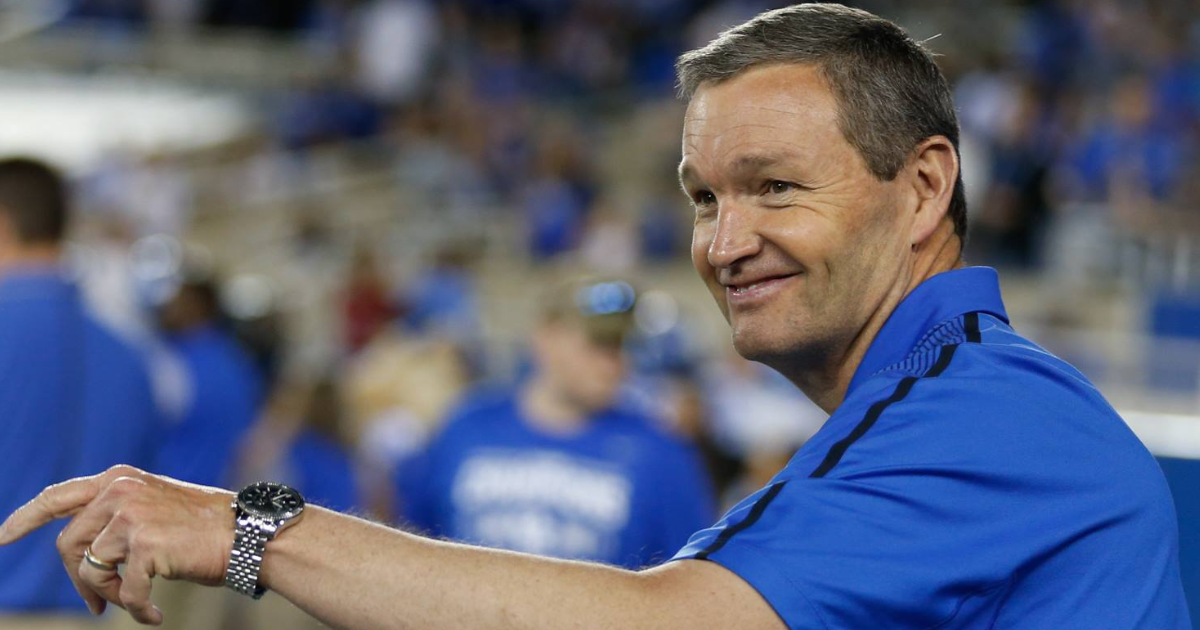
SEC Spring Meetings were always important but this year’s edition held more significance with all of the changes coming to college athletics. Transfer portal, NIL’s future, the College Football Playoff (CFP), and finding additional revenue streams have all come into the focus. The league has some big decisions to make in a short amount of time. There will be some bumps along the way.
Kentucky athletic director Mitch Barnhart wants his school and colleagues in the conference to keep their eye on the prize.
“It’s so easy to look at decisions in silos or one-offs,” Mitch Barnhart told Paul Finebaum on Wednesday evening in Destin.” I think that one of the things that will be important — at least from our lens at Kentucky and I hope our lens as a conference — is we look at these things in the total.”
“Is the decision-making around the CFP? Is the decision-making around football scheduling? Those things are all very inner-related, in my mind. For us at Kentucky, they’re very inner-related. I want to make sure that we know what’s most important. Our finances are part of that conversation. Our fan base is a part of that conversation. Keeping hope alive for our programs is really, really important. Opportunity is important for our kids. I think those things are all inner-related. I think as a group of leaders, we’ve gotta make sure that we’re thinking about them together.”
There are important decisions to be made. Coaches and administrators might not agree on every topic. What works for one school might not work for the other. We are seeing that play out on a conference level as the ACC and Big 12 have proposed a 5+11 expanded playoff format with one automatic bid for each conference plus highest-ranked Group of Five conference champion as opposed to the 4+4+2+2+1 model that would give the Big Ten and SEC eight total automatic bids.
Everyone is having to work together to find some sort of consensus. That is no different for the leaders of the SEC.
Each decision has an impact on the other. Mitch Barnhart wants the conference, behind Greg Sankey’s leadership, to consider everything at play when making individual decisions. There is likely a reason why we won’t hear about anything final being determined this week.
From a Kentucky point of view, staying at an eight-game conference schedule in football and having playoff access if a 9-3 year with a winning record in conference play occurs again seems most important. That’s where the opportunity comes into play. However, the financial issues loom large. UK must have enough revenue to pay athletes and keep their entire athletic department operating. That means not cutting sports or jobs. That could mean becoming more willing to do certain things that you haven’t in the past. Some things like playing a nine-game schedule and being open to the revenue streams that play-in games for the CFP that the auto bid structure could bring. Flexibility from everyone is needed.
“If you think them in pieces, I think that’s when you begin to maybe make some bad decisions,” Barnhart said. “So I’m hopeful that we look at them in the aggregate.”
NIL
How a conference call gave Texas’ new NIL bill a push through the Senate
MIRAMAR BEACH, Fla. (KBTX) – Well after sunlight ceased permeating the windows of the Texas Senate chamber Tuesday, Senator Brandon Creighton stood to, again, present a bill he had sponsored for debate. His message to fellow senators was as complicated as the issue the bill addresses, but there was a simple point distributed throughout — […]
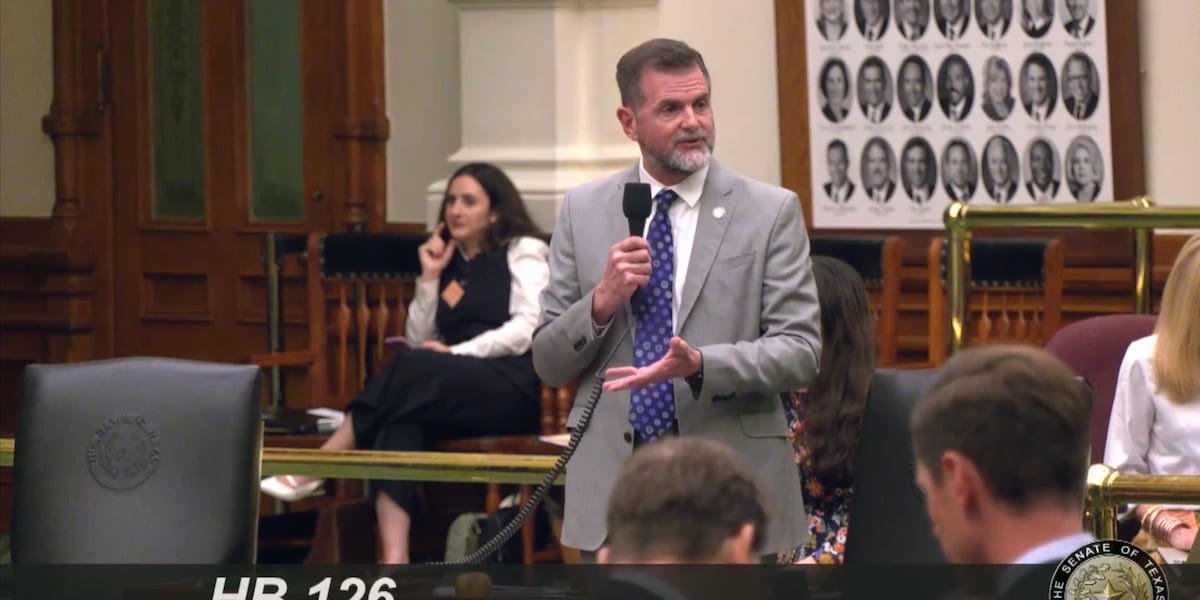
MIRAMAR BEACH, Fla. (KBTX) – Well after sunlight ceased permeating the windows of the Texas Senate chamber Tuesday, Senator Brandon Creighton stood to, again, present a bill he had sponsored for debate.
His message to fellow senators was as complicated as the issue the bill addresses, but there was a simple point distributed throughout — if House Bill 126 doesn’t pass in the final week of this legislative session, college football in the state of Texas would, in essence, die.
Ultimately, a 30-1 vote sent the new name, image and likeness (NIL) compensation legislation through the Senate and to the desk of Gov. Greg Abbott to sign into law. To Lt. Governor Dan Patrick, president of the Senate, it was his colleges that performed CPR on college athletics in the state.
“The Senate saved college sports in Texas,” Patrick boasted from the dais before moving on to other business.
However, an 11th-hour conference call between senators, coaches and athletic directors provided the necessary last push to get the important bill over the finish line in the Senate chambers after two evenings of confusion and debate.
“It seems that a lot of the members wanted to vent their frustration with their concerns about college football and where this is going and paying the athletes and the change in the NCAA… A lot of members have concerns about the rich getting richer and the small guy doesn’t have a chance and it’s not going to be competitive,” Rep. Carl Tepper (R-District 84), the bill’s original author, told KBTX. “And so, we’re still not really sure where this is headed, but this is certainly the right direction to keep Texas on par with the rest of the country.”
The current NIL bill on Texas’s books does not allow universities to enter into direct contracts with athletes and prohibits athletes from earning NIL money while participating in team activities. The pending settlement for the House v. NCAA antitrust case opens the door for athletic departments to share revenue up to $20.5 million per year for the use of athletes’ names, images and likenesses during game broadcasts and in promotion of the department. A clause in HB 126 also allows for flexibility in the state law should the NCAA or a court ruling change the landscape or rules regarding NIL compensation in the future. The state needed an update to its law to allow Texas universities to participate in these portions of the settlement.
Sen. Brandon Creighton, who sponsored the bill in the Senate, first presented HB 126 on Sunday evening. However, the legislation faced immediate pushback from Sen. Royce West (D-District 23) and Sen. Lois Kolkhorst (R-District 18), questioning whether loosening NIL restrictions would allow college programs to offer NIL deals to students as young as middle school.
“Colleges can go and start talking about NIL money to, like, children,” Kolkhorst said on the Senate floor. “What is going to happen is the agents, now, are going to be working through children. I’m not mad at [Creighton] and I’m not mad at Rep. Tepper. I think I’m mad at the United States of America for truly having a collapse of amateur athleticism and we’re going to have agents going and talking to 12 year olds.”
Patrick, noting the late hour, called Creighton forward for a side conversation, the result of which was tabling the bill for a later debate.
In the interim, the concerned senators held a conference call with administrators, coaches and legal council from athletic departments across the state to help clarify the purpose of the new NIL bill. To ease concerns about financially predatory actors preying on talented younger athletes, the Senate drafted an amendment to the legislation that said universities or third-party entities could not enter into an NIL contract with athletes younger than 17.
“I think it allayed some concern, but the bill already doesn’t allow any payment to any student that’s not enrolled at the school,” Tepper said. “So, you can do 100 contracts, but you actually have to show up until the contract is executed and commenced.”
Texas athletic director Chris Del Conte, who was part of the conference call, said he understood the senators’ concerns and had no problem with the amendment.
“I think they’re very thoughtful in the state of Texas that publicity rights are a collegiate opportunity,” he said Wednesday at SEC Spring Meetings. “It’s protecting high school, middle school and junior high. They wanted to do that and I understood that.”
Texas A&M athletic director Trev Alberts was unavailable for comment due to his commitments presenting at SEC Spring Meetings, according to a spokesperson. Requests for comment from many of the senators involved in the debate were not returned.
Two days and a conference call later, Creighton presented the bill once again on the Senate floor to a mostly united chamber. Sen. Kelly Hancock (R-District 9) took the floor in support of the bill.
“I have had constituents with young men and women that, because they live in our state and we have not done this, have contacted my office and said, ‘Hey, y’all need to pass something. My child wants to go to school in the state of Texas, but y’all are going to have to compete with the other people talking to my child,’” Hancock said.
Eventually, with the flick of the gavel, Patrick called for a vote to suspend the three-day rule resulting in an immediate vote on the bill. The count tallied 30 in favor and one “non sports fan,” he announced.
“Here’s to winning in Texas,” Patrick said, putting finality on the issue.
Now, the amended bill must be approved by the House before it finds its way to Gov. Greg Abbott’s desk to sign into law. Coaches across the state desire a two-thirds majority vote in the House that will put the law into effect as soon as it is signed. If it gets less, the bill will become law on Sept. 1, losing valuable months of signing contracts and recruiting, should the House settlement be approved.
Tepper said he is hopeful his colleges will understand the importance of the two-thirds vote.
“I hate to predict things, because you just own’t want to muck it up somehow, but I’m confident that my colleges see the importance of this. I’m confident that they realize this has been hashed out as much as it can be hashed out as much as it can be hashed out. The situation is the situation and also, this is an opportunity for these high school and college athletes. I”m hoping and pleading and praying that they concur.”
But, Tepper sees the light at the end of a long tunnel that provided new life to college athletics in Texas.
“It’s more like satisfying that you know that you might have had a small hand in saving college football in Texas,” he said.
Copyright 2025 KBTX. All rights reserved.
NIL
Three schools are in 4
Go to On3 Home About On3AboutAdvertisersCareersContact SupportCustomer ServicePrivacy PolicyChildren’s Privacy PolicyTerms of Service On3 ConnectTwitterFacebookInstagram Publishing Data Powered bySpiny AI The On3 App for college sports fans: © 2025 On3 Media, Inc. All rights reserved. On3 is a registered trademark of On3 Media, Inc. 0
-

 Sports3 weeks ago
Sports3 weeks ago2025 NCAA softball bracket: Women’s College World Series scores, schedule
-

 College Sports1 week ago
College Sports1 week agoPortal Update – Basketball and Gymnastics Take Hits
-
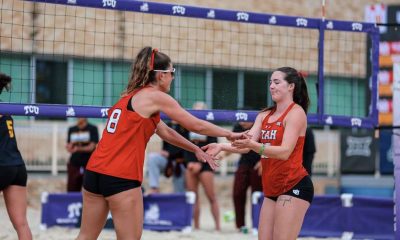
 Sports3 weeks ago
Sports3 weeks agoA fight to save beach volleyball and Utah athletics’ ‘disheartening’ answer
-

 Rec Sports2 weeks ago
Rec Sports2 weeks agoThe Program, a New Basketball Training Facility, Opening in Greenpoint This September
-
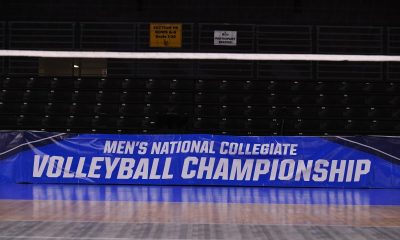
 Sports3 weeks ago
Sports3 weeks ago2025 NCAA men’s volleyball championship: Bracket, schedule, scores
-

 College Sports3 weeks ago
College Sports3 weeks agoNew restaurant to open in State College | Lifestyle
-
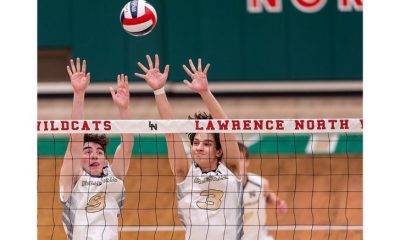
 Sports3 weeks ago
Sports3 weeks agoBoys volleyball: Millers sweep Lawrence North
-

 Sports3 weeks ago
Sports3 weeks agoMajor League Baseball results
-
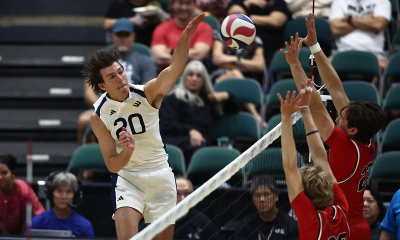
 Sports3 weeks ago
Sports3 weeks agoHilir Henno of UC Irvine Receives AVCA Distinction of Excellence Award
-

 Sports3 weeks ago
Sports3 weeks agoWork out, don't run out


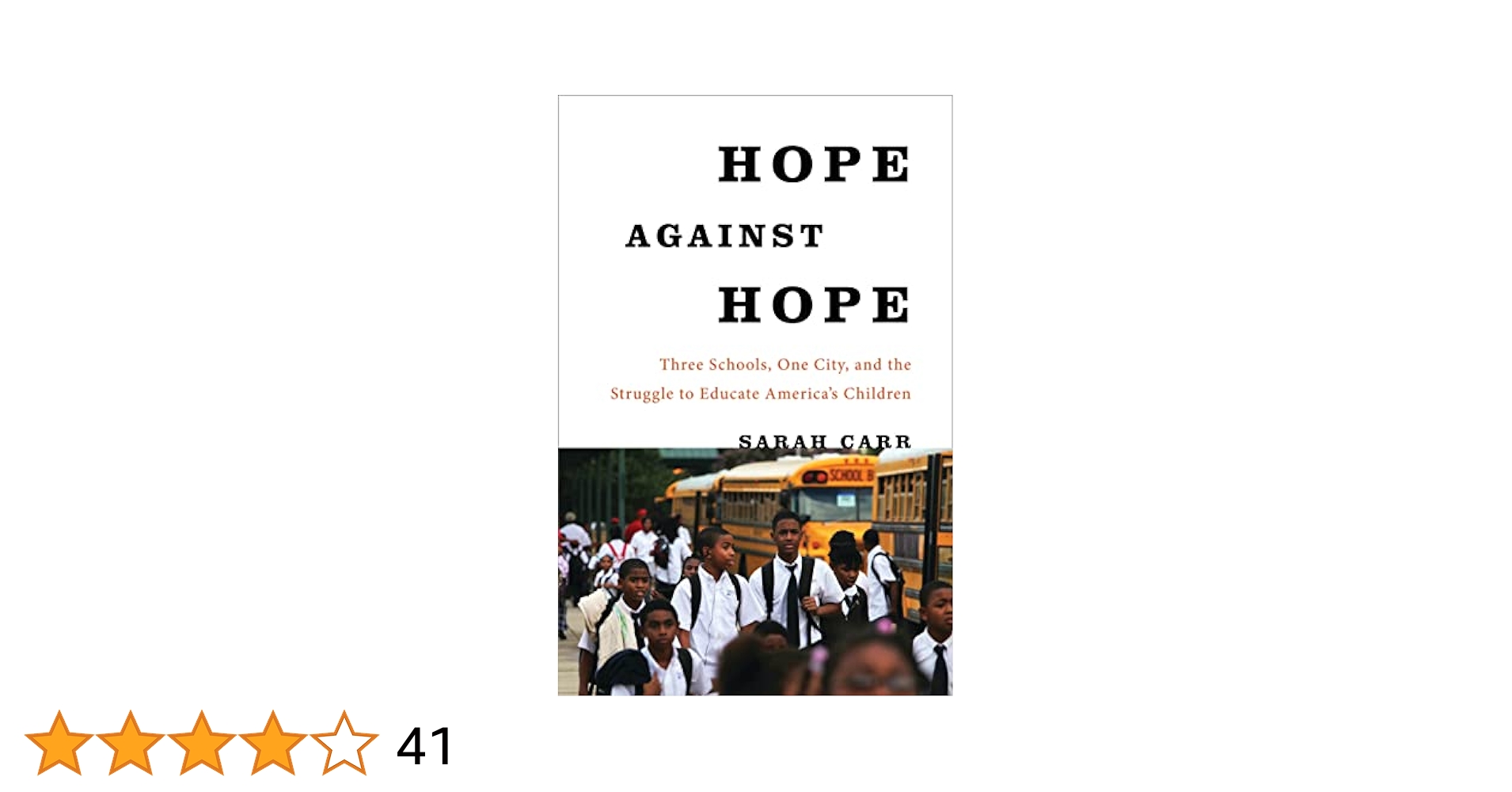














 Arkansas Razorbacks vs. Kentucky Wildcats | Full Game Highlights | ESPN CBB
Arkansas Razorbacks vs. Kentucky Wildcats | Full Game Highlights | ESPN CBB

















